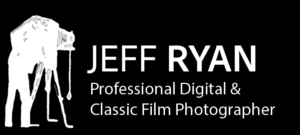OTTAWA PROFESSIONAL PHOTOGRAPHER RYAN STUDIO BLOG POST / EDUCATIONAL PHOTOGRAPHY ARTICLE “DETERMINING YOUR CAMERA NEEDS” / WORKSHOP/ SERVING KANATA / NEPEAN / STITTSVILLE / MANOTICK / ORLEANS
MARCH, 2021
OTTAWA PROFESSIONAL PHOTOGRAPHERS/COLUMN/ BLOG /WORKSHOP/FIELD TRIP TEACHER/ JEFF RYAN PHOTOGRAPHY/ SERVING KANATA, ORLEANS, BARRHAVEN, MANOTICK, STITTSVILLE
“CAMERA CORNER COLUMN”
ARTICLE: “DETERMINING YOUR CAMERA NEEDS”
Let’s begin first and foremost with your camera
From an instructor’s point of view, it’s become a world of automation for the novice, making the choice of proper equipment difficult and somewhat overwhelming at times. People have responded well to the automatic markets whether it be point and shoot film/digital cameras, or those who prefer a more conventional 35mm interchangeable lens camera combining both manual and automatic exposure controls.-(The auto/manual exposure systems, particularly manual, will give you maximum control and flexibility over your subject matter and is highly recommended). The first step in identifying which product is most suitable for you, is to ask yourself what applications you will require of your camera. Some of the more commonly asked questions are as follows:
1) What do I tend to photograph most often–people or landscapes? If people, perhaps all you require is a point and shoot automatic with a short range zoom lens built into the camera, if you are not overly technically oriented.
2) Do you enjoy the option of changing lenses to achieve different focal lengths and perspectives?
3) Is it important for you to make specific changes regarding exposure and depth of field, therefore indicating that a better quality manual camera would be more applicable for your style of photography?
4) Are you the type of photographer that prefers well designed order in your imagery, which includes good structure and well orchestrated compositions? This is an indication that supplemental equipment such as a tripod or monopod be introduced into your image making process.
Much thought should be given to making the correct choice to suit your particular needs. When purchasing equipment, I highly recommend looking ahead and not limiting yourself to a model that may not suffice down the road. Analyse your requirements and interpret what your needs will be in approximately three to five years time. Surprisingly, many people feel the need to trade their gear in a couple of years after making an initial investment, finding it no longer suits their needs. By taking the time to review your options carefully and the functions that one particular camera offers, you will be pleased with your purchase and it’s results and not be put into the position of unloading equipment due to it’s levels of inadequacy.
Features I recommend you look for on a camera body prior to making a purchase are the following: manual and automatic exposure control systems, depth of field preview button, exposure compensation scale, self timer, double or multiple exposure control button allowing you to place several images on one frame, tripod socket, cable release socket/attachment, lighted control dial/LCD-(liquid crystal display window), multiple area metering system including spot, centre weighted and matrix, PC socket for remote flash operation, batteries that are easily accessible in any convenience store, ISO speed manual adjustment control, internal viewfinder blind to block extraneous light from entering the viewfinder chamber which can alter your set exposure, full auto and manual focus control pertaining to all lenses be it brand name or generic. Other features on most film product models include auto advance/ rewind, and power winders that advance by single frame or continuous action.
Of the above mentioned features, priority should be placed on manual exposure control, a depth of field preview button and the ability to alter the characteristics of your light meter via centre weighted, spot and matrix. These items, are features that I frequent regularly when recording imagery. On future columns, I will address in detail the items listed above reviewing their function and practicality while working as a professional photographer in the field. The articles will reflect a progressive manner in their approach, covering one aspect of photography/visual control at a time.
My next column will contain a discussion related to my discovery of the limitations in equipment, after receiving disappointing photographs from the lab using a very basic point and shoot camera.
WITH GOOD WISHES,
JEFF RYAN PHOTOGRAPHER/OTTAWA PROFESSIONAL PORTRAIT PHOTOGRAPHY/IMAGING STUDIO, ONTARIO.
Email—jeffryan@storm.ca
www.jeffryan-photography.com
613.599.5363
